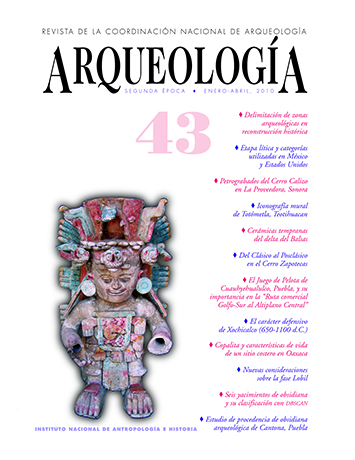The tennis ball game Cuauhyehualulco, Puebla, and the importance of this in the "Gulf-South trade route to Central Altiplano"
Abstract
The following text presents a morphological analysis of four ballcourt complexes and an isolated ballcourt found at the archaeological site of Cuauhyehualulco, located directly northeast of the modern-day town of San Salvador El Seco. These five structures were compared to those found at Cantona, which has well established dates. In addition, materials collected in the surface survey of Cuauhyehualulco were studied in comparison with known materials from neighboring regions. This analysis made it possible to chronologically place the Cuauhyehualulco ballcourts and also to establish the site’s cultural affiliation with Cantona, as well as the relationship between the South-Gulf commercial corridor with the Central Highlands. (One of the authors of this text proposed the existence of this trade corridor in the 1970s.) Furthermore, research confirmed the presence of a branch of this corridor (also known as the “Teotihuacan Corridor”), which goes from Huamantla, Tlaxcala, through Nopalucan La Granja, and runs parallel to the Sierra de Soltepec (towards the interior of the Oriental Basin). The corridor then passes through Cuauhyehualulco and continues toward Chalchicomula —today Ciudad Serdán— before going toward Maltrata and descending to the Central Gulf Coast.



